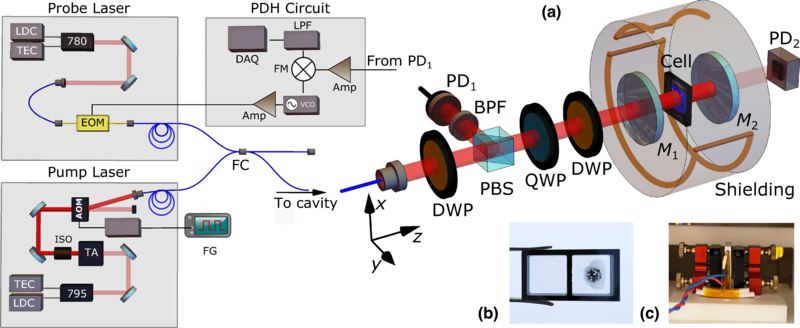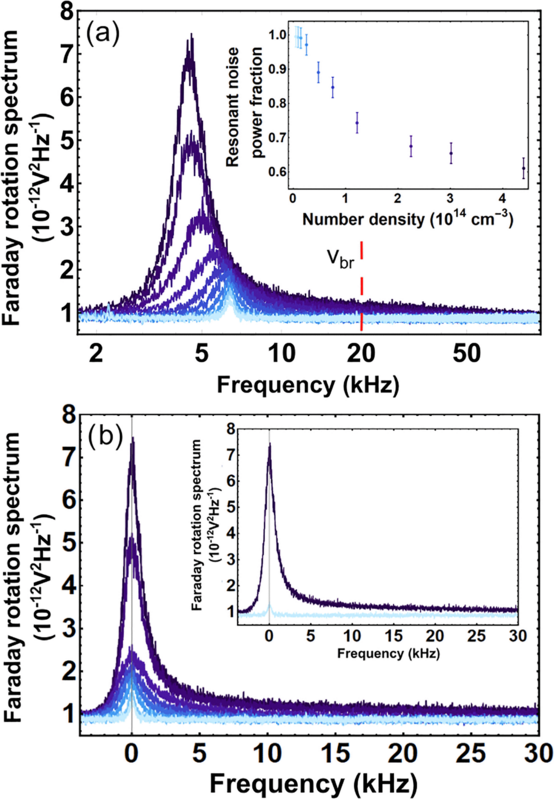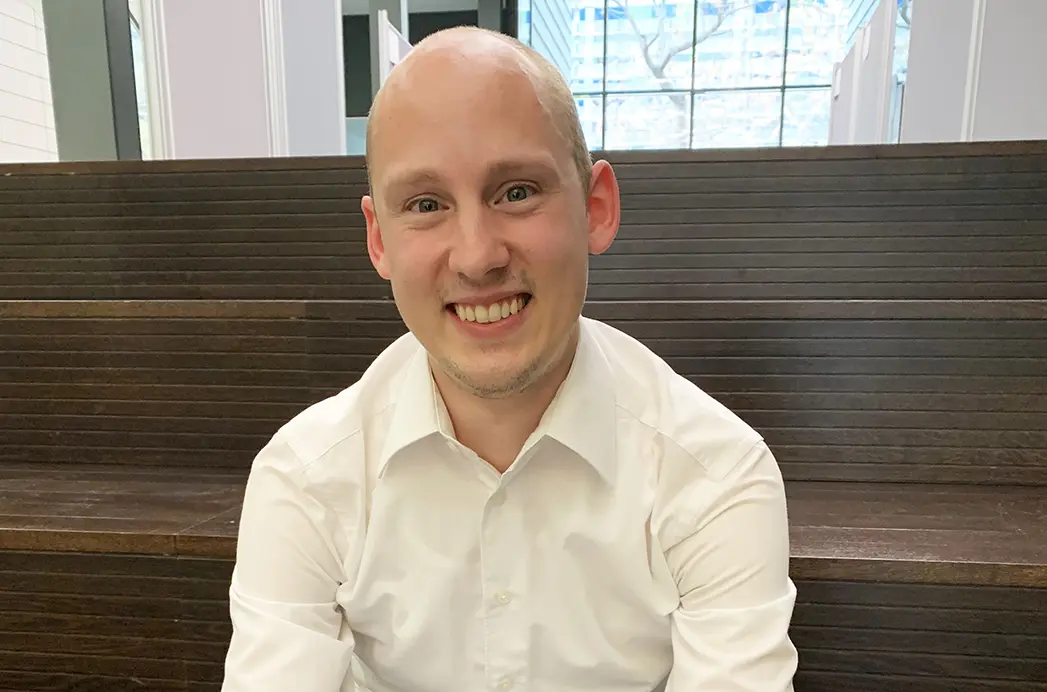Home • News
News from the Mitchell Group
 | ICFO + Quside support ETHZ Bell test with quantum random number generator. Article in Nature |
 | Bose-Einstein Condensate sets record for magnetic sensitivity, speed, and spatial resolution. Article in PNAS |
 | Squeezed-light sensitivity-boost for an already-sensitive magnetometer. ICFO news item |
 | Laura Zarraoa joins us to work on single atoms. Welcome Laura ! |
 | Fraser Hill-Casey joins us to work on atomically-detected nuclear magnetetic resonance. Welcome Fraser ! |
 | StutiGugnani joins us to work on spinor condenates. Welcome Stuti ! |
 | EnesAybar joins us to work on spinor condenates. Welcome Enes ! |
 | Gianvito Lucivero joins us to work on hot atoms. Welcome Gianvito ! |
 | Michael Tayler joins us to work on hot atoms and magnetic resonance. Welcome Michael ! |
 | Daniel Benedicto joins us to work on spinor condensates. Welcome Daniel ! |
 | Sven Bodenstedt joins us from the University of Stuttgart and Center for Integrated Quantum Science and Technology, Germany. Welcome Sven ! |
 | Natalia Alves joins us from Universidade Federal de Pernambuco (UFPE), Brazil. Welcome Natalia ! |
 | Simon Coop successfully defended his thesis "Nonlinear Behaviour of Ultracold Atoms in Optical Dipole Traps: Large Atomic Light Shifts, a Quantum Phase Transition, and Interaction-Dependent Dynamics." Congratulations Simon! |
 | The BIG Bell Test reports thirteen tests of local realism and other realistic theories, with the help of 100,000 volunteers. Article in Nature. |
 | Joanna Zielinska successfully defended his thesis "Spontaneous parametric down-conversion sources for generation of atom-resonant quantum light." Congratulations Joanna! |
 | Ultra-cold atoms team pushes magnetic coherence to new extremes. Article in NJP. |
 | Hot atoms team shows how Bayesian statistics can recover signals faster than the bandwidth of an atomic sensor. Article in PRL. |
 | Ferran Martin successfully defended his thesis "Coherent Sensing of Magnetic Waveforms with Spin-squeezed Atoms." Congratulations Ferran! |
 | Silvana Palacios successfully defended her thesis "Single Domain Spinor Bose-Einstein Condensate." Congratulations Silvana! |
 | Group shows how to (almost) completely evade the uncertainty principle in magnetic resonance measurements. Article in Nature. |
 | Giorgio Colangelo successfully defended his thesis "Quantum Measurements with Cold Atomic Ensembles." Congratulations Giorgio! |
 | Gianvito Lucivero successfully defended his thesis "Quantum Metrology with High-Density Atomic Vapors and Squeezed States of Light." Congratulations Gianvito! |
 | Ultracold atoms team creates a magnetic superfluid. When bosonic atoms like rubidium-87 get sufficiently cold, the form a new phase of matter that is both superfluid (no friction at all) and ferromagnetic. |
 | Group Leader Morgan Mitchell awarded the Ehrenfest Award for Foundations of Physics. Congratulations, Morgan ! |
 | Article in Physical Review Letters shows how quantum non-demolition measurements can be used to test Leggett and Garg's ideas of macroscopic realism in macroscopic systems. |
 | Federica Beduini successfully defended her thesis "Entanglement and State Characterisation from Two-Photon Interference." Congratulations Federica! |
 | Dr. Naeimeh Behbood graduated with the thesis Generation of Macroscopic Spin Singlets in Cold Atomic Ensembles. Congratulations, Naeimeh ! |
 | Article in PRL shows that suqeezed beams of light consist of entangled photons. |
Article in PRL
We observe for the first time the entanglement of microscopic particles (in our case photons) inside of a macroscopic quantum state (in our case squeezed light).
Featured in Science News.
 | Dr. Yannick Alan de Icaza Astiz graduated with a thesis in Optimal Signal Recovery for Pulsed Balanced Detection. Congratulations, Yannick ! |
Article in PRL
By applying quantum non-demolition measurements to an unpolarized atomic ensemble, we generate a macroscopic singlet state. At least 500,000 atoms become entangled in the process. Editor's suggestion in PRL
Featured in Scientific American.
Ferran Adrià visits the lab, talks about creativity and very cold atoms.
Article in PRX
We demonstrate that for some measurements, e.g. measuring atomic spin alignment, a nonlinear measurement beats the best possible "ordinary" measurement. This confirms a proposal by Sergio Boixo and Carlton Caves, and is beyond the standard models of quantum sensitivity limits. Editor's choice in Science.
Steven Chu (Nobel 1997) visits the lab, talks about atom interferometry, climate change, and re-creating the culture of Bell Labs.
 | Mario Napolitano successfully defended his dissertation Interaction-based nonlinear quantum metrology with a cold atomic ensemble. Congratulations, Mario ! |
Jia Kong (visiting PhD student) joins from East China Normal University (Shanghai).
We demonstrate 43 gigabits per second randomness generation, using off-the-shelf components. In collaboration with V. Pruneri's group at ICFO. Newspaper report in El Periodico
Natalie Martinez (post-doc) joins from Los Alamos National Labs (USA).
 | Brice Dubost successfully defended his dissertation Light-Matter Interaction with Atomic Ensembles. Congratulations, Brice ! |
 | Florian Wolfrgamm successfully defended his dissertation Atomic Quantum Metrology with Narrowband Entangled and Squeezed States of Light. Congratulations, Florian ! |
Thomas Vanderbruggen (post-doc) joins from the Institut d'Optique in France, and Joanna Zielinska (PhD), joins from Warsaw, Poland.
Silvana Palacios (PhD)
joins from the Universidad Nacional Autonoma de Mexico, and Ferran Martin (PhD), joins from the Universitat Autonoma de Barcelona.
The project, "Atomic Quantum Metrology," will test revolutionary new proposals in ultra-sensitive measurement using quantum optics.
Morgan has been selected to join the prestigious Catalan research organization ICREA (Institució Catala de Reçerca i Estudis Avancats).
 Silvana Palacios Silvana Palacios | Silvana, from the UNAM (Mexico), joins the group as a Master student. |
Pau Gomez Kabelka, from Barcelona and Joanna Zielinska, from Torun, Poland join the group for the summer.
Editor's summary:
Quantum metrology uses entanglement and other quantum resources to improve precision measurement, resulting in sensitivity limited by the Heisenberg uncertainty principle. But in theory, interactions among particles may allow scaling beyond this limit into 'super-Heisenberg' territory. Napolitano et al. prove experimentally that this can indeed occur in a nonlinear, non-destructive measurement of the magnetization of an atomic ensemble. The work shows that inter-particle interactions could be a useful resource for quantum metrology, although the relative performance of nonlinear versus linear measurements has yet to be explored more generally Nature 471, 486–489 (2011). A collection of press is here.
Abstract:
We present a magnetic field imaging technique based on spatially resolved detection of Larmor precession. An optically trapped, elongated, and cold atomic sample of rubidium serves as magnetic field probe. We detect Larmor precession with a spatial and a temporal resolution of ∼ 50 μm and ∼ 120 μs, respectively. Projection-noise limited absorption imaging, feasible with current technologies, implies a sensitivity of ∼ 10 pT/Hz1/2 at 50 μm resolution; addition of an optical lattice could give ∼ 300 fT/Hz1/2 sensitivity.
Appl. Phys. Lett. 98, 074101 (2011)
Abstract:
We demonstrate the generation of rubidium-resonant heralded single photons for quantum memories. Photon pairs are created by cavity-enhanced down-conversion and narrowed in bandwidth to 7 MHz with a novel atom-based filter operating by “interaction-free measurement” principles. At least 94% of the heralded photons are atom-resonant as demonstrated by a direct absorption measurement with rubidium vapor. A heralded autocorrelation measurement shows gc(2)(0)=0.040±0.012, i.e., suppression of multiphoton contributions by a factor of 25 relative to a coherent state. The generated heralded photons can readily be used in quantum memories and quantum networks.
PRL, 106, 053602 (2011)
Prof. Nicolas
Godbout from Polytechnique Montréal (CA) joins the group for a 3
month visiting period and Giorgio Colangelo, previously at
Università di Pisa (IT), starts his PhD in the atom lab.
We organize a workshop on 'Quantum Technology with Atomic
Ensembles' inviting the tribunal members of Marco Koschorreck's
PhD defense, to present some of their recent researches.
We host the ''International Meeting on Engineering, Manipulation
and Characterization of Quantum States of Matter and Light.'' Top
researchers from 11 countries participate.
quantumoptics.es/EMALI2010

We describe nonlinear quantum
atom–light interfaces and nonlinear quantum metrology in the
collective continuous variable formalism. We develop a nonlinear
effective Hamiltonian in terms of spin and polarization collective
variables and show that model Hamiltonians of interest for
nonlinear quantum metrology can be produced in 87Rb ensembles.
With these Hamiltonians, metrologically relevant atomic
properties, e.g. the collective spin, can be measured better than
the 'Heisenberg limit' ?1/N, where N is the number of photons. In
contrast to other proposed nonlinear metrology systems, the
atom–light interface allows both linear and nonlinear estimation
of the same atomic quantities.
New J. Phys. 12 093016 (2010)

]] We demonstrate a
light-shot-noise-limited magnetometer based on the Faraday effect
in a hot unpolarized ensemble of rubidium atoms. By using
off-resonant, polarization-squeezed probe light, we improve the
sensitivity of the magnetometer by 3.2 dB. The technique could
improve the sensitivity of the most advanced magnetometers and
quantum nondemolition measurements of atomic spin ensembles.
Phys. Rev. Lett. 105, 053601 (2010)

We demonstrate
sub-projection-noise sensitivity of a broadband atomic
magnetometer using quantum nondemolition spin measurements. A
cold, dipole-trapped sample of rubidium atoms provides a long-
lived spin system in a nonmagnetic environment, and is probed
nondestructively by paramagnetic Faraday rotation. The calibration
procedure employs as known reference state, the maximum-entropy or
‘‘thermal’’ spin state, and quantitative imaging-based atom
counting to identify electronic, quantum, and technical noise in
both the probe and spin system. The measurement achieves a
sensitivity 1.6 dB (2.8 dB) better than projection-noise (thermal
state quantum noise) and will enable squeezing-enhanced broadband
magnetometry. Phys. Rev. Lett. 104, 093602 (2010)












































 Ferran Adrià
Ferran Adrià Ricardo Jimenez Martinez
Ricardo Jimenez Martinez Steven Chu
Steven Chu
 Jia Kong
Jia Kong Article in Optics Express
Article in Optics Express Lukas Slodicka?
Lukas Slodicka? Ricardo Jimenez Martinez
Ricardo Jimenez Martinez Natali Martinez
Natali Martinez


 Thomas Vanderbruggen?
Thomas Vanderbruggen? Joanna Zielinska
Joanna Zielinska Silvana Palacios
Silvana Palacios Ferran Martin
Ferran Martin Silvana Palacios
Silvana Palacios Pau Gómez Kabelka
Pau Gómez Kabelka Joanna Zielinska
Joanna Zielinska ]] We demonstrate a
]] We demonstrate a









